Applications for Thermal and Optical IP Camera Systems
Thermal and optical IP cameras use different technologies to capture video. Each type of camera system provides a unique role in an IP video surveillance system. Systems that combine thermal and optical cameras provide a synergistic solution for long-range surveillance.
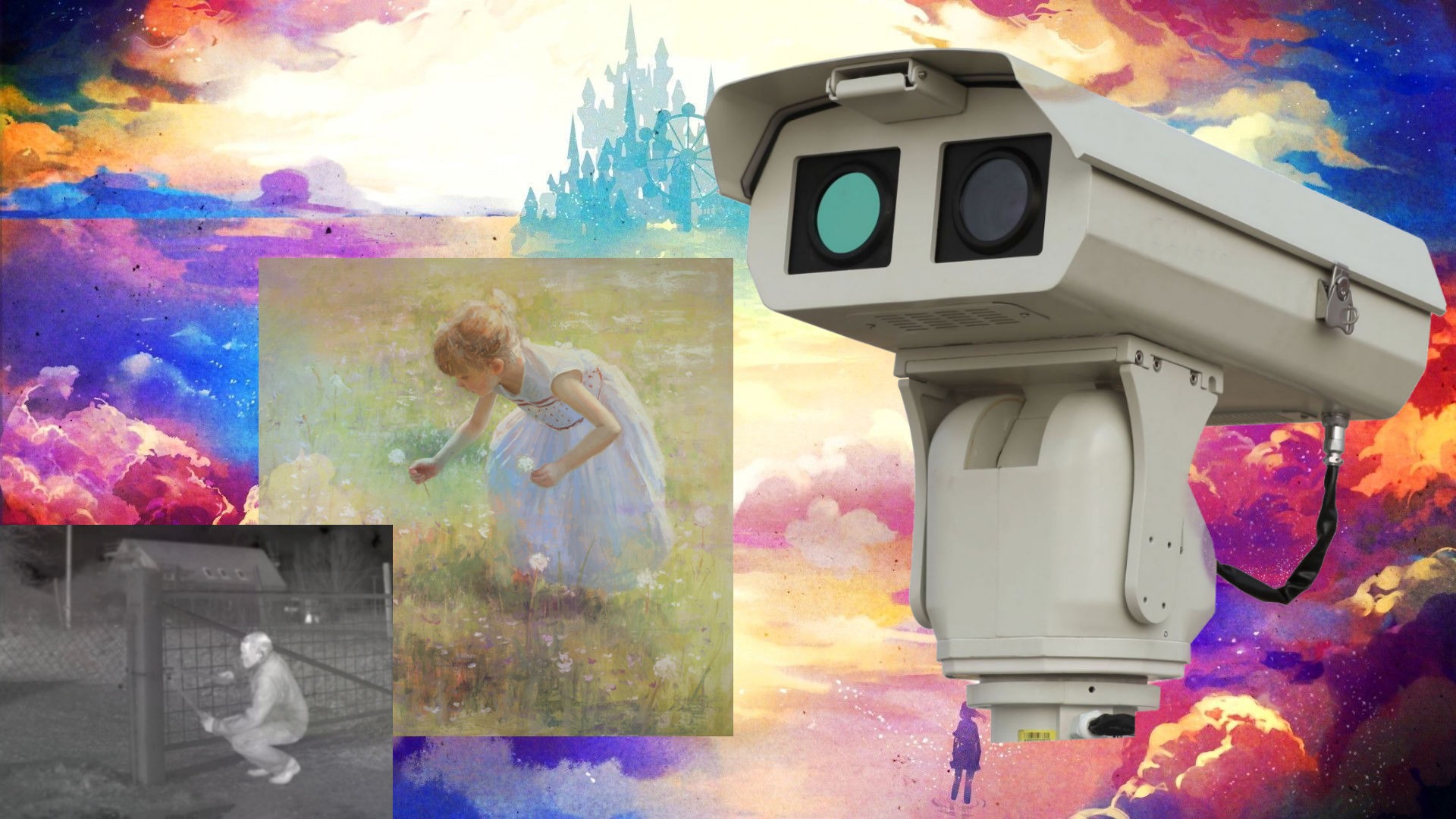
Thermal cameras are better for night viewing since they don’t require any light. The optical IP cameras require daylight or illumination at night and are best for identifying details such as a person’s face or a license plate number. This article describes when to use these camera systems.
Applications for Optical and Thermal Cameras
Optical IP cameras are primarily used for general surveillance. We use IP camera systems indoors and outdoors to view and record everything from criminals to wildlife.
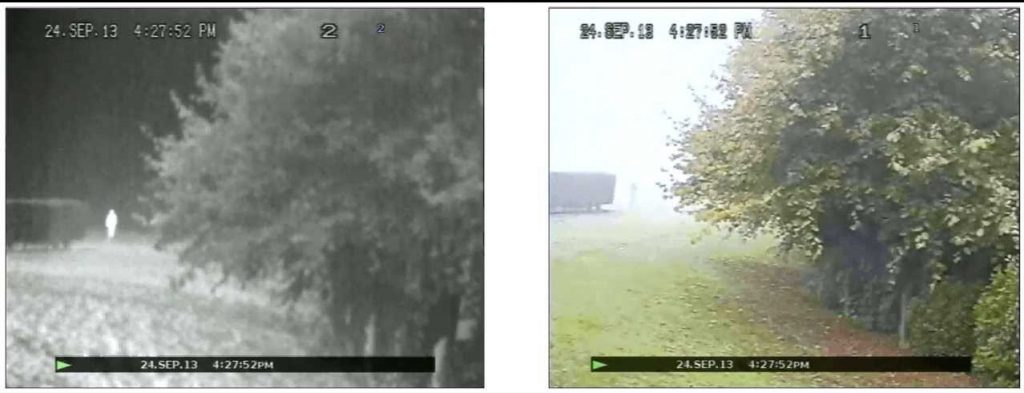
Thermal IP cameras are excellent for nighttime surveillance and can also be used to provide non-contact temperature measurements. The thermal imaging camera not only can be used at night, it can also “see” through rain, snow, and fog so can be used to enhance surveillance applications.
When two separate cameras are combined, it makes it easier to find the object that was detected by one of the cameras. By combining the optical and thermal cameras, we create a very effective long-range camera surveillance system. Since the cameras are mounted together on the same pan-tilt mechanism, the system is effective for the detection, recognition, and identification of the target.

The dual IP camera systems are also good for viewing objects that are many kilometers away. In these applications, we use a thermal camera with a wide lens to get a larger field of view. This allows us to detect the object. The optical camera has a zoom lens so you can recognize or identify what the object is. The optical camera can also be fitted with a laser illuminator that can light-up a target that’s over 3 miles (5 Km) away.
There are off-the-shelf thermal-optical PTZ cameras as well as custom-made PTZ systems that are built to meet a specific application.
How the Long-Range Camera Systems Work
The camera systems consist of an IP camera head and sensor, lens, pan-tilt mechanism, and illuminator. Thermal cameras are designed to detect the heat energy coming from an object, while an optical camera detects the visible light reflecting from the object.
Sensors for Optical Cameras:
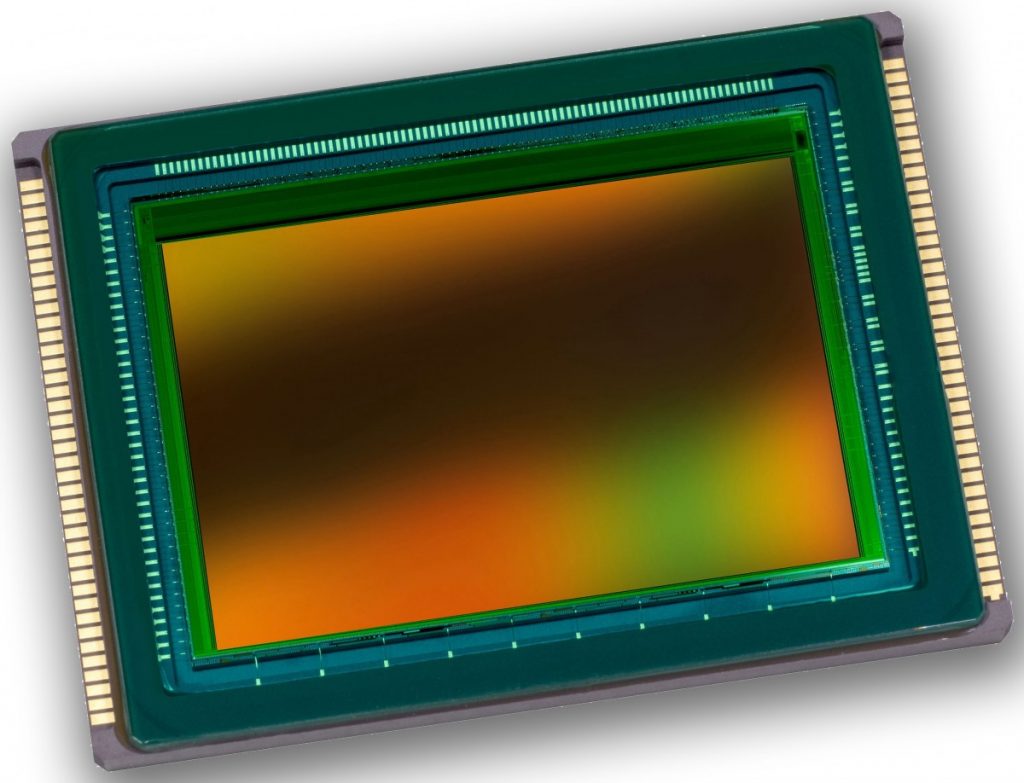
The optical sensors used in high-performance long-range camera systems provide megapixel resolution and can operate in low-light. The higher the resolution, the more detail you can see at a distance and the wider the field of view.
There is a trade-off between resolution and low-light sensitivity. 2-Megapixel optical cameras have the best low-light sensitivity, while the latest 4K cameras (12-Megapixel) provide the widest field of view but less low-light sensitivity.
Sensors for Thermal Cameras
The thermal cameras use special sensors that view the infrared spectrum of the electromagnetic spectrum. The video image displays the temperature difference between the object and the background.
There are cooled or uncooled sensor systems. The cooled systems provide better detection because they provide less thermal noise and can see objects with less heat contrast than uncooled sensors. In some applications, they provide the only way to detect objects that are very far away, but they are much more expensive and require periodic maintenance to keep them operational.
Thermal sensors with a resolution of 640 x 480 pixels are the most popular but are also available with lower and higher resolution. The price of the thermal camera depends on the resolution of the imaging systems. The higher the resolution the wider the field of view and the easier it is to spot the target. Even though they provide lower resolution than the optical camera the thermal camera can detect an object at a greater distance than the optical camera. This is because the object will bloom brightly if its temperature is hotter than the surrounding area.

Lens for Optical IP Cameras
The optical cameras use special long-range zoom lenses. For example, one of the systems uses a lens that zooms from 32mm to 2050mm. These high-performance lenses need to have good light transmission (low f-stop), and IR correction to maintain focus day and night.
The higher the mm number the further you can see. For example, a 140 mm lens provides enough magnification so that you can tell if a person is carrying a rifle at a range of about ½ mile (829m) away. If the camera uses a 500mm lens, you can see the person over one 2500m (1.5 miles away). For more examples, look at our article, How Far We Can See With with PTZ Camera.
Lens for the Thermal Camera
The thermal camera uses special germanium lenses that can pass the infrared spectrum. There are fixed lenses and variable zoom lenses available. For example, we can select a wide lens to view a border crossing, or a narrow lens to view a road. Fixed lenses vary from 50 mm to over 100 mm, and there are variable lenses that zoom from 34 mm to 155 mm.
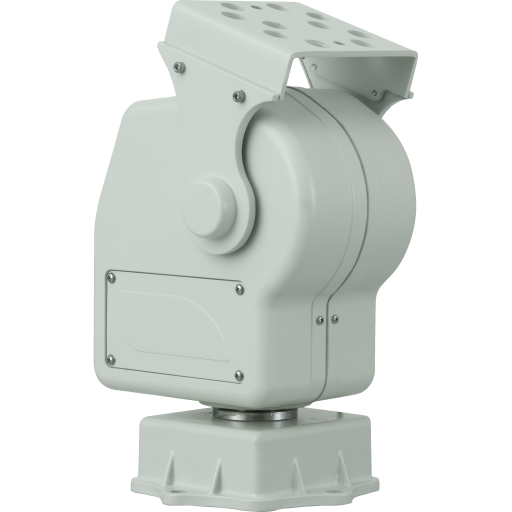
The Pan-Tilt Mechanism:
The pan-tilt mechanism needs to be very stable. The further away you try to see, the more small movements disturb the video. The high-performance pan-tilt mechanisms move the camera by 0.01 degrees. The very high-performance pan-tilt mechanism moves the camera very quickly (up 240-degrees/sec) to the exact position with almost no backlash. You can look at our article about IP Camera Stabilization for more details about camera stabilization.
The pan-tilt mechanism needs to be very stable. The further away you try to see, the more small movements disturb the video. The high-performance pan-tilt mechanisms move the camera by 0.01 degrees. The very high-performance pan-tilt mechanism moves the camera very quickly (up 240-degrees/sec) to the exact position with almost no backlash. You can look at our article about IP Camera Stabilization for more details about camera stabilization.
The pan-tilt mechanism gets more expensive as the viewing distance increases. This is because it needs to move a heavier camera lens assembly. Pricing also increases when the Pan-tilt mechanism needs to move quickly to track fast-moving objects.
Laser Illumination:
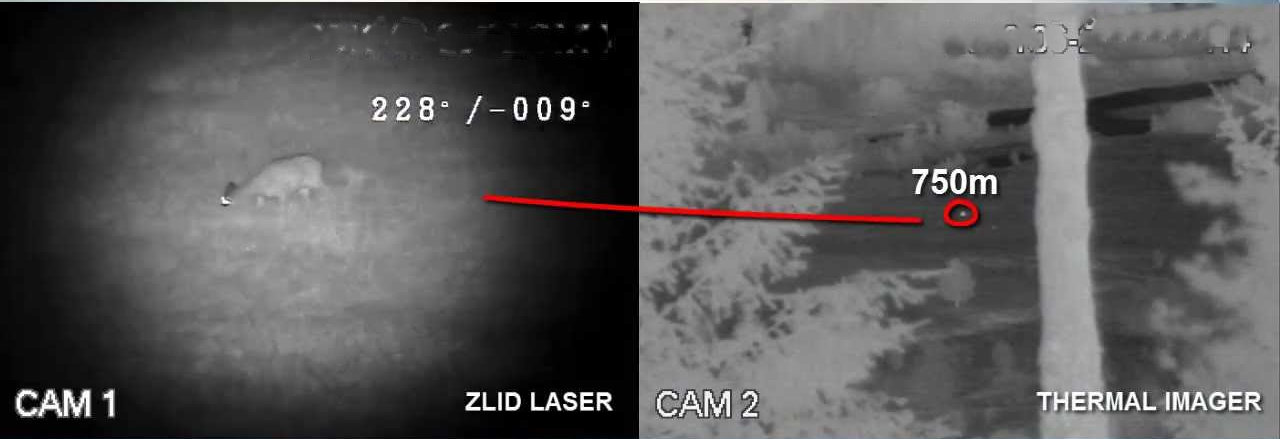
The laser illuminator can provide focused IR light up to 5 Km away. The effective range is determined by the camera low-light sensitivity and lens low-light capability (maximum f-stop). Cameras with larger sensors provide better low-light sensitivity, which maximizes the nighttime range of the camera system. The better-quality laser illuminators adjust the focus angle so that it maximizes the light depending on the focal distance of the optical zoom lens. This reduces hot spots that can affect the video quality.
Laser illuminators must be used with care. Lasers with over 15-Watt power levels can exceed the danger limit for human eyes at close range. This is called the Nominal Ocular Hazard Distance (NOHD). Usually, we recommend safety measures with lasers that use over 15-Watts of power. The risk of eye damage can be reduced by preventing people from being too close to the illuminator. For example, a person should not be closer than 185 m (607 ft.) when a 15 W laser is used. To protect the people, an active range finder system can be added to the camera system that automatically turns off the illuminator whenever an object is closer than this minimum range.
Summary Comparing Optical and Thermal Cameras
The thermal IP camera is designed for nighttime viewing while the optical IP camera works best during the day. IP Surveillance camera systems that combine both optical and thermal cameras provide a powerful surveillance system that is designed for long-range camera applications. With the right lens, you can see things many miles away day and night.
Please contact us for help in defining your long-range camera system. We can be reached at 1-800-431-1658 in the USA, or at 914-944-3425 everywhere else, or use our contact form.